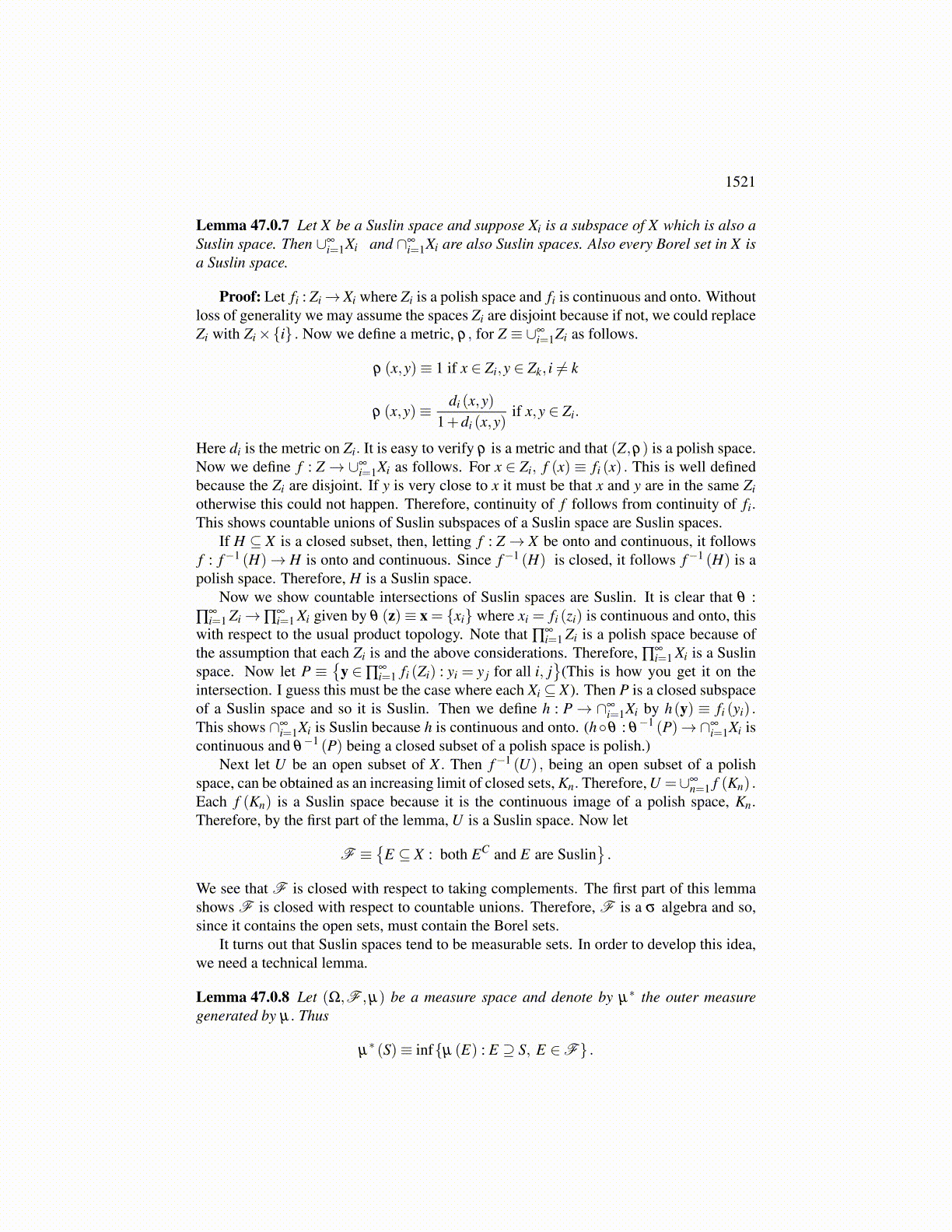
Chapter 47
The Yankov von Neumann Aumann the-orem
The Yankov von Neumann Aumann theorem deals with the projection of a product measur-able set. It is a very difficult but interesting theorem. The material of this chapter is takenfrom [29], [30], [10], and [70]. We use the standard notation that for S and F σ algebras,S ×F is the σ algebra generated by the measurable rectangles, the product measure σ
algebra. The next result is fairly easy and the proof is left for the reader.
Lemma 47.0.1 Let (X ,d) be a metric space. Then if d1 (x,y) =d(x,y)
1+d(x,y) , it follows thatd1 is a metric on X and the basis of open balls taken with respect to d1 yields the sametopology as the basis of open balls taken with respect to d.
Theorem 47.0.2 Let (Xi,di) denote a complete metric space and let X ≡∏∞i=1 Xi. Then X
is also a complete metric space with the metric
ρ (x,y)≡∞
∑i=1
2−i di (xi,yi)
1+di (xi,yi).
Also, if Xi is separable for each i then so is X .
Proof: It is clear from the above lemma that ρ is a metric on X . We need to verify X iscomplete with this metric. Let {xn} be a Cauchy sequence in X . Then it is clear from thedefinition that {xn
i } is a Cauchy sequence for each i and converges to xi ∈ Xi. Therefore,letting ε > 0 be given, we choose N such that
∞
∑k=N
2−k <ε
2,
we choose M large enough that for n > M,
2−i di (xni ,xi)
1+di (xni ,xi)
<ε
2(N +1)
for all i = 1,2, · · · ,N. Then letting x ={xi} ,
ρ (x,xn)≤ εN2(N +1)
+∞
∑k=N
2−k <ε
2+
ε
2= ε.
We need to verify that X is separable. Let Di denote a countable dense set in Xi,Di ≡{ri
k
}∞
k=1 . Then let
Dk ≡ D1×·· ·×Dk×{
rk+11
}×{
rk+21
}×·· ·
Thus Dk is a countable subset of X . Let D ≡ ∪∞k=1Dk. Then D is countable and we can
see D is dense in X as follows. The projection of Dk onto the first k entries is dense in
1521